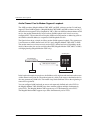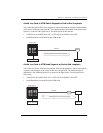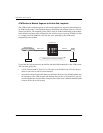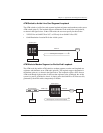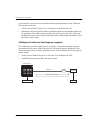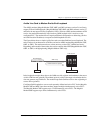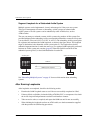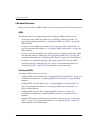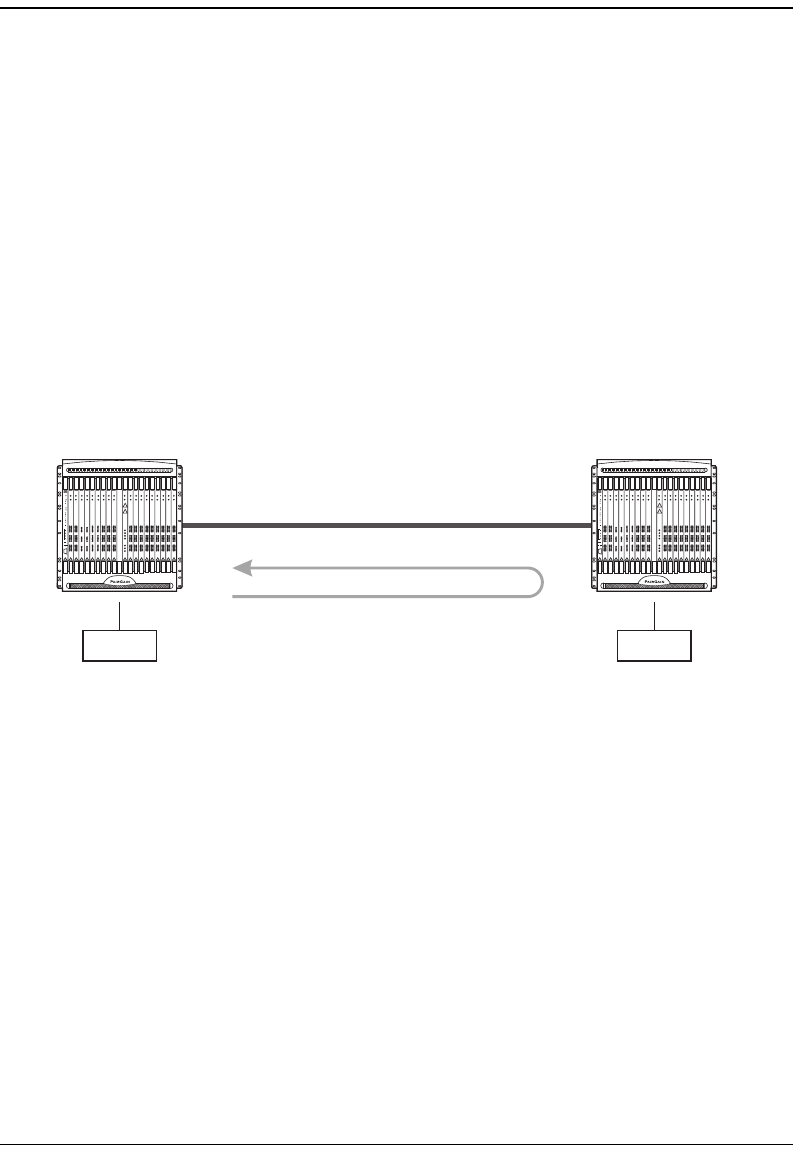
OAM Alarms and Loopbacks
68 Avidia System Configuration and Management User Manual
Segment Loopback for a Subtended Avidia System
Multiple systems can be implemented, viewed, and managed as if they were one system.
This type of management is known as subtending. Avidia systems can subtend other
Avidia systems or Avidia systems can be subtended by other ATM devices, such as
ATM switches.
The user can manage or subtend a remote Avidia system using another Avidia system. One
possible link between the subtending Avidia system and the subtended or remote Avidia system
is an Avidia OC-3 line card (AV311, AV312, or AV313). The subtending Avidia system (point
B) originates and terminates the OAM loopback, as shown in the figure below. The loopback
target or destination is the subtended Avidia system (point C). The loopback test for this
subtended segment functions in much the same way as a segment OAM loopback is performed
between an Avidia system and a modem (page 62). Enter the OAM Location ID for the
subtended system (point C) as the OAM Destination Location ID.
See “Subtending Multiple Systems” on page 45 for more information about subtending
systems.
After Running Loopbacks
After loopbacks are completed, check for the following results:
• Examine the OAM Loopback status to see if the test successfully completed or failed.
• If the test failed, use OAM to isolate the failing ATM link, PVC, or component. Also check
the Avidia loop and link performance statistics and interface counters.
• Take corrective action, as required, and repeat the OAM test until it runs successfully.
• When initiating the loopback test from an ATM switch, use the documentation supplied
with that product for OAM testing procedures.
Point C
Avidia System Subtended Avidia System
Point B
ATM Link
OAM Segment Loopback





